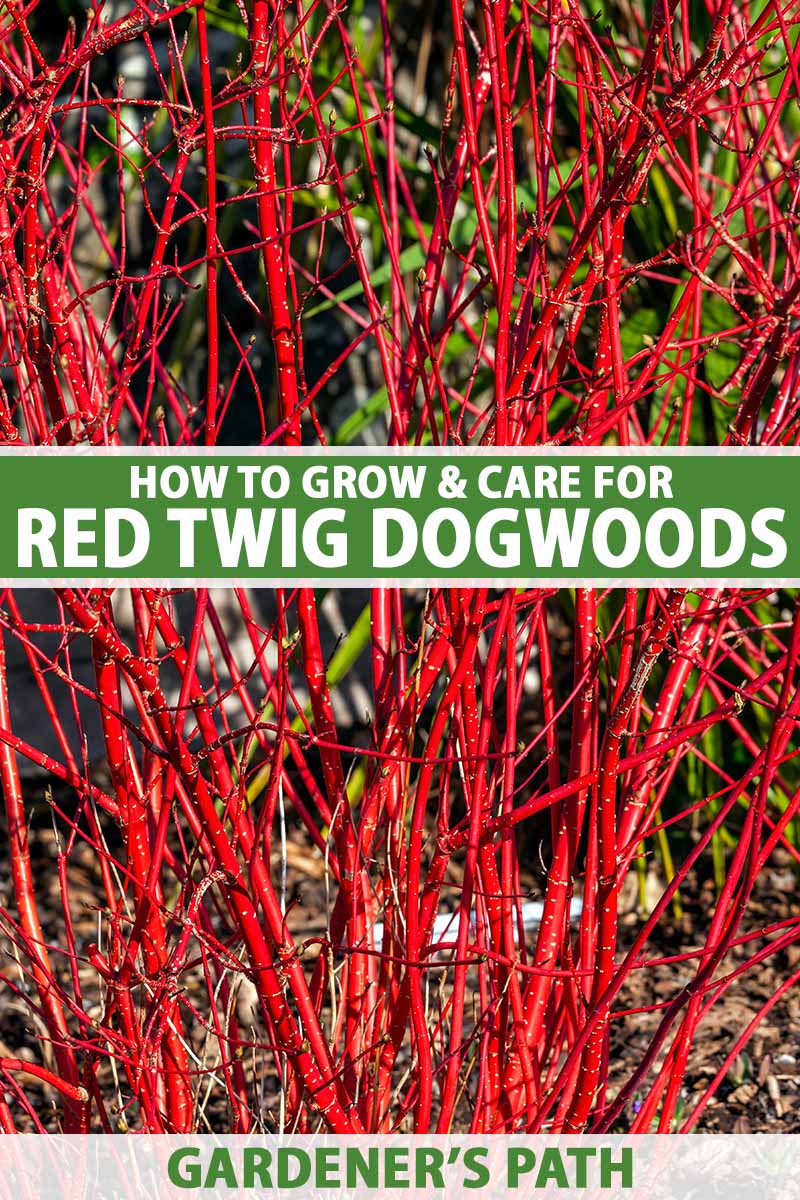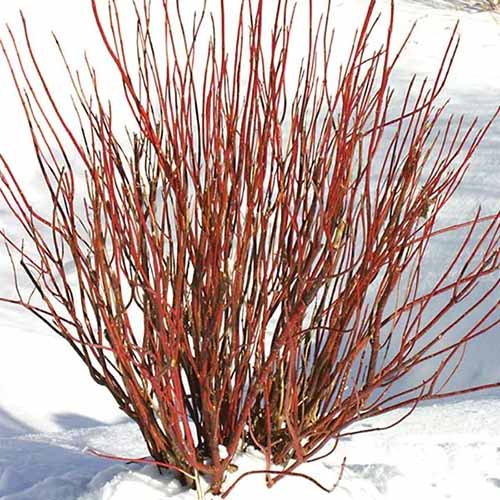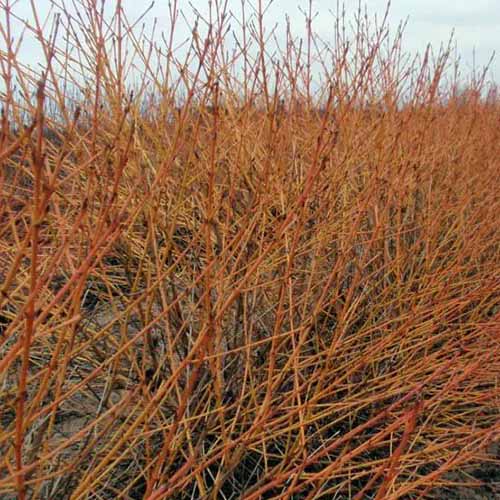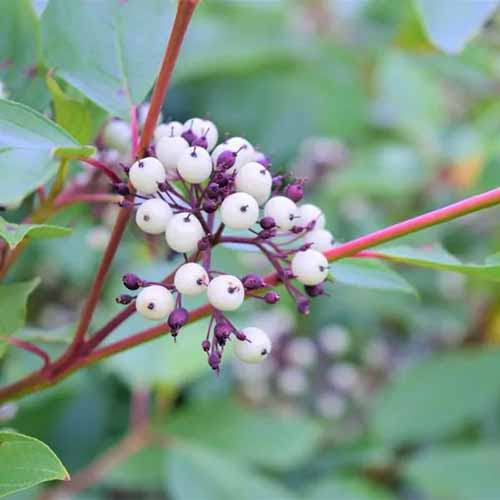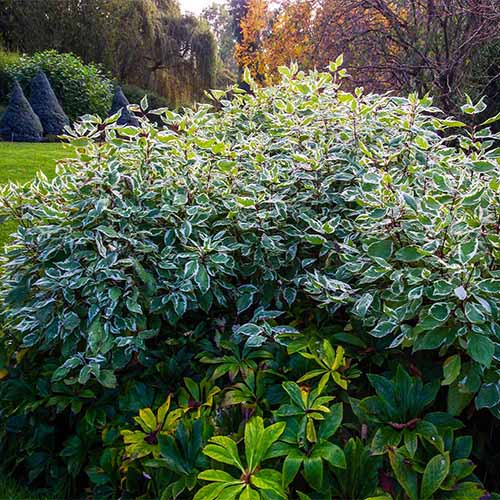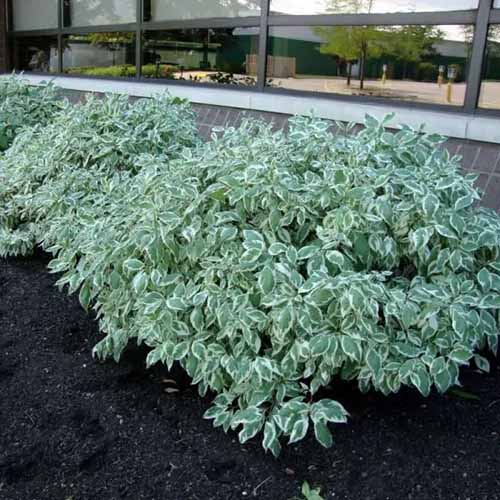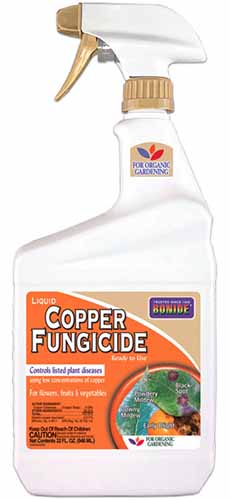Cornus alba, C. sanguinea, C. sericea
Would you wish to know my secret for creating the right winter preparations, house decor, and wreaths? That’s proper, branches from my purple twig dogwoods.
As a Scandinavian-American, born in the midst of winter and raised within the Northern Hemisphere, it’s no shock that I greet the chilly season with a squeal of pleasure. Sure, I’m a kind of individuals. Don’t hate me as a result of I’m wintry.
This additionally means I dwell for winter adorning, whether or not it’s inside my house or exterior on the porch and in my gardens. I’m all the time on the lookout for methods to adorn my areas in ways in which spotlight the great thing about the chilly season whereas making a welcoming and comfortable environment for all to get pleasure from.
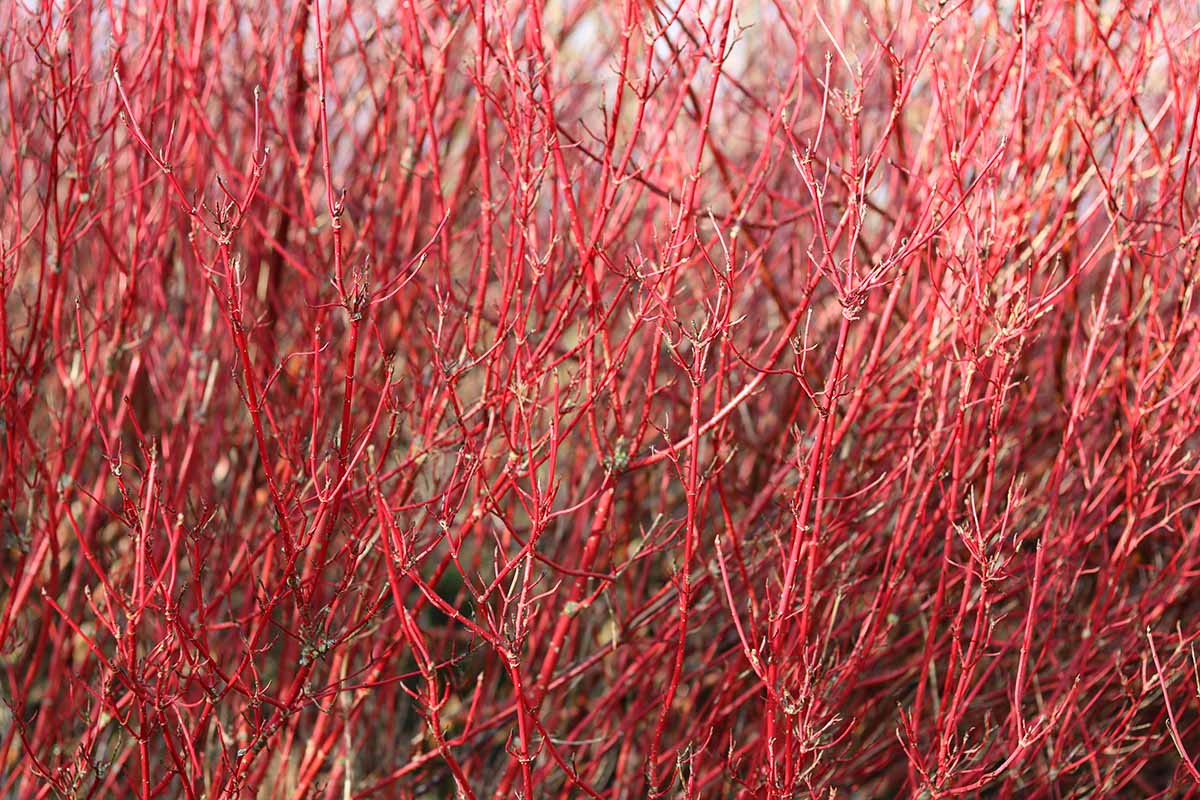

We hyperlink to distributors that can assist you discover related merchandise. Should you purchase from considered one of our hyperlinks, we might earn a fee.
Again in my 20s I obtained severe in regards to the artwork of winter decor. I needed to take the precious wreath-making abilities my mom taught me to the next stage.
So I started to review the person items of what constitutes enticing, eye-catching shows. And I made an vital discovery: purple twig dogwood.
Pink twig dogwoods are deciduous shrubs within the Cornus genus. Relying on the place you reside on the planet, you will discover purple twig varieties and cultivars of varied species within the genus.
On this article, I’ll be protecting the species mostly grown in house gardens: C. alba, C. sanguinea, and C. sericea.
The second I recognized this group of vegetation as an integral participant within the winter decor and gardening recreation, I felt like I’d gained the lottery.
At first, again then, I’d go to nice lengths to scavenge and forage in forests for the colourful purple twigs – mountain climbing throughout fields, mucking by way of swamps. It was a number of work. So once I lastly had my very own land to domesticate my dearest plant buddies, these dogwoods positively made the checklist of must-haves.
Immediately, in my backyard, I’ve three various kinds of purple twig dogwoods rising, and I’m going to share all about how you can develop and take care of these vibrant shrubs.
Right here’s a fast overview of what I’ll cowl on this article:
Should you’re able to take your winter gardening to the subsequent stage with purple twig dogwood, let’s soar proper in!
What Is Pink Twig Dogwood?
Cornus is a genus within the Coraceae household of flowering timber and shrubs identified for his or her enticing timber and flowers and their distinctive, vibrantly coloured bark, generally generally known as dogwoods.
There are roughly 50 totally different species inside the genus and the colours of their bark vary from acid inexperienced, to orange, yellow, and purple. Many of the sorts generally known as “purple twig dogwoods” are from the species C. alba, C. sanguinea, and C. sericea.
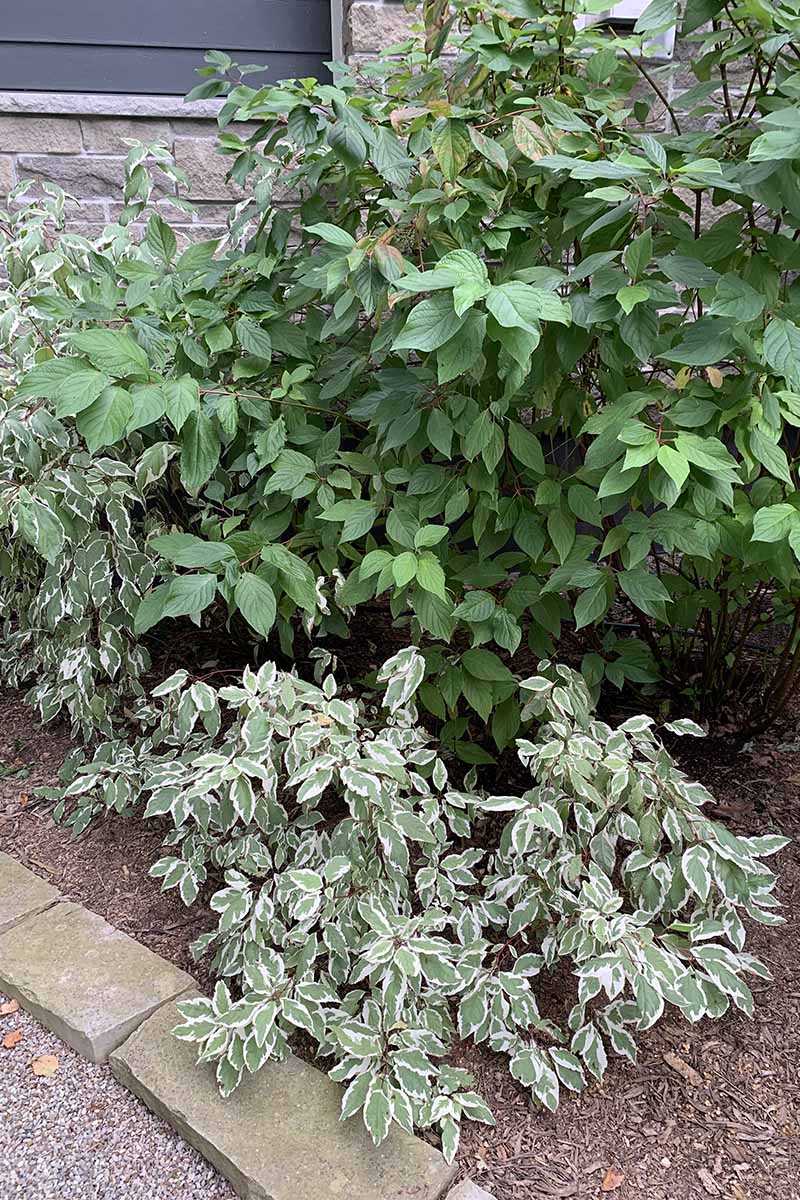

The intense or deep purple colour of their bark is most pronounced in youthful stems and most frequently noticed or noticeable through the winter after the shrubs have dropped their leaves.
Except for the identify purple twig dogwood, every of the three species goes by a number of different widespread names.
C. alba is also referred to as tartarian or tatarian dogwood, red-barked, Siberian, and white-berried dogwood. It’s native to Siberia, northern China, and the Korean peninsula.
C. alba was beforehand labeled as C. pumila and Swida alba so it’s possible you’ll typically see it labeled with these synonyms.
C. sanguinea, also referred to as widespread dogwood, typically goes by blood twig, European, and swamp dogwood. This species is native to Europe and western Asia.
C. sericea is often generally known as purple osier or American dogwood, because it’s native to North America. Moreover, it’s typically mistaken for C. alba.
There are numerous varieties and cultivars inside these three species, and never all of them characteristic the purple branches that give them the moniker “purple twig dogwood.” On this article, we’ll concentrate on the purple twig sorts.
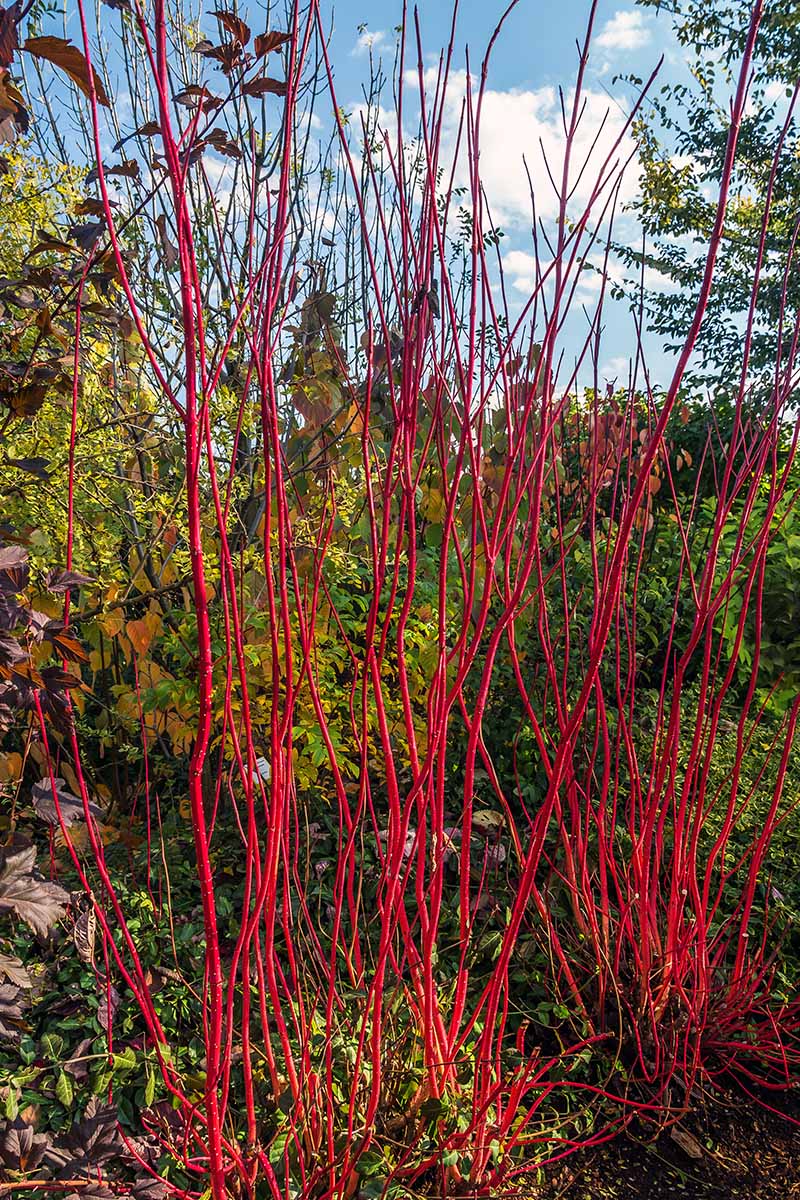

Usually, these shrubs can vary anyplace between 4 to fifteen toes tall and from three to fifteen toes huge at maturity. They attain full maturity inside about 5 to 10 years.
Pink twig dogwoods start their annual development cycle in spring with buds that open into clusters of small, white flowers, attracting bees and butterflies. As summer time approaches, these flowers give technique to white or bluish-greenish berries, that are widespread with birds.
Leaves emerge to a lush strong inexperienced, or delicate shades of gold. Some cultivars have variegated foliage with enticing white, cream, or yellow with inexperienced mixtures.
Come fall, the leaves rework into shades of deep gold, orange, purple, and purple providing an excellent autumn show. In winter, the foliage falls away to disclose the signature brightly coloured stems, creating placing visible curiosity in opposition to a snowy or lackluster backdrop.
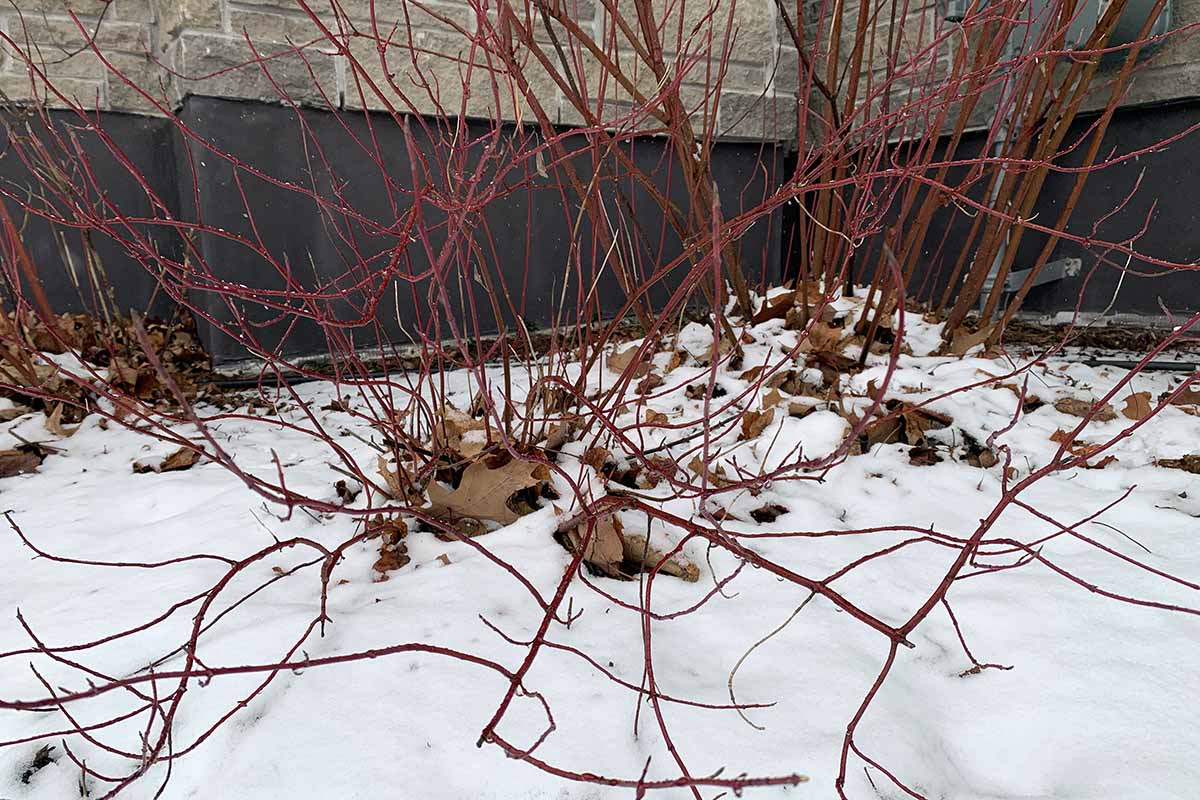

This seasonal development showcases the numerous decorative qualities of the purple twig dogwoods all year long. These shrubs are low upkeep and develop efficiently in USDA Hardiness Zones 2 to eight, relying on the species.
We’ll cowl extra on care and upkeep later, nevertheless it’s value mentioning right here that to supply these coveted purple twigs, common pruning is important to refresh the expansion as a result of the youngest branches are additionally probably the most brightly coloured.
Earlier than we transfer to care, although, let’s discover the historical past and origin of those beauties.
Cultivation and Historical past
The great thing about purple twig dogwood solely showcases one aspect of its persona. Culturally, it boasts a historical past of useful makes use of.
Native People used the bark of C. sericea in dyes and basket weaving, and so they additionally added it to their smoking tobacco. The sturdy branches made terrific handles for instruments.
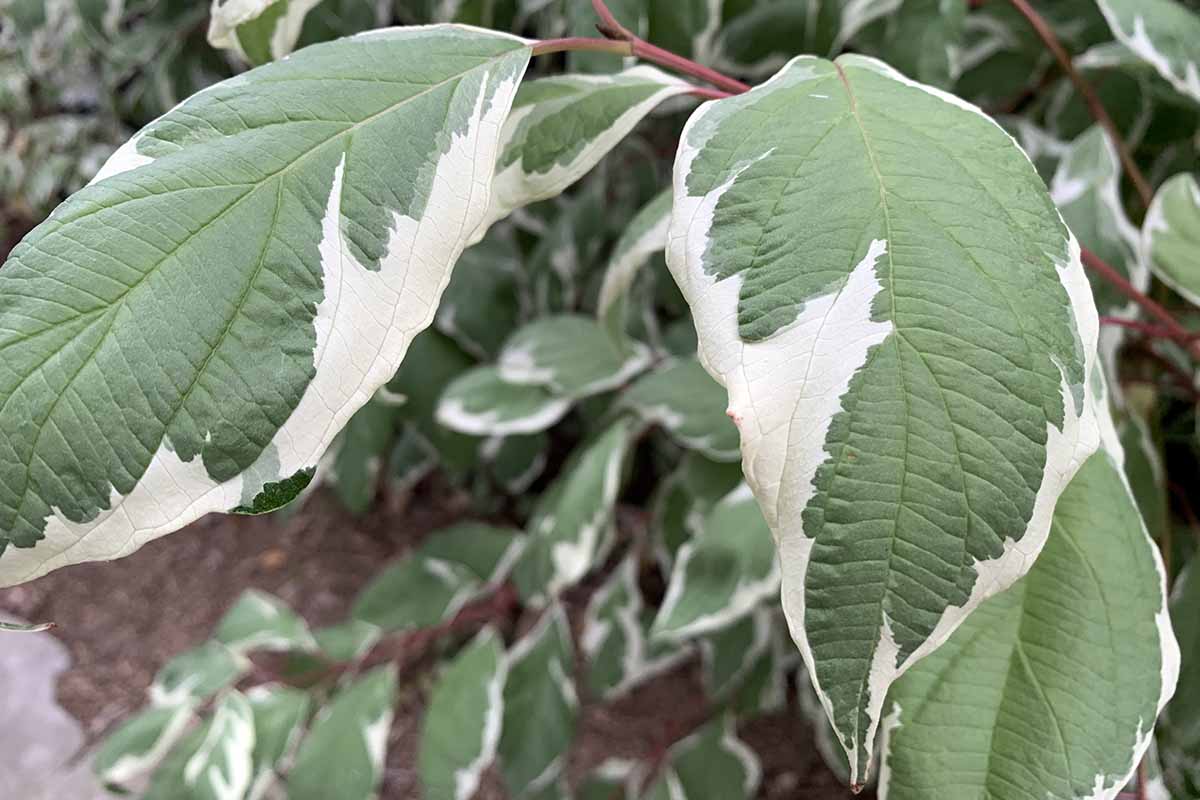

These shrubs serve effectively in riparian zones, shelterbelts, woodlots, and plenty of different areas focused for ecological reclamation and naturalization. They stabilize the soil, entice pollinators, and feed wildlife, making them an excellent plant for agroforestry designs.
Whereas birds and small mammals may benefit from the berries of purple twig dogwoods, you, as a human, won’t. Though they’re technically edible, they’re bitter-tasting and might trigger gastrointestinal misery.
First Nations peoples consumed them however would typically mix the berries with different candy fruits like Saskatoon berries.
Now that we’ve obtained a good suggestion of what purple twig dogwood shrubs are, and why they’re widespread, let’s take a more in-depth look, starting with how you can propagate these vegetation.
Pink Twig Dogwood Propagation
Pink twig dogwoods might be propagated by way of a couple of totally different strategies together with from seed, by taking cuttings, by division, and naturally by transplanting a container-grown plant bought from a good grower.
From Seed
Whereas it’s attainable to gather seeds and develop purple twig dogwood vegetation from these seeds, the method is hard, time-consuming, and unpredictable.
Lots of the shrubs you purchase from greenhouses and nurseries are cultivated varieties and seeds won’t develop true to the mother or father plant.
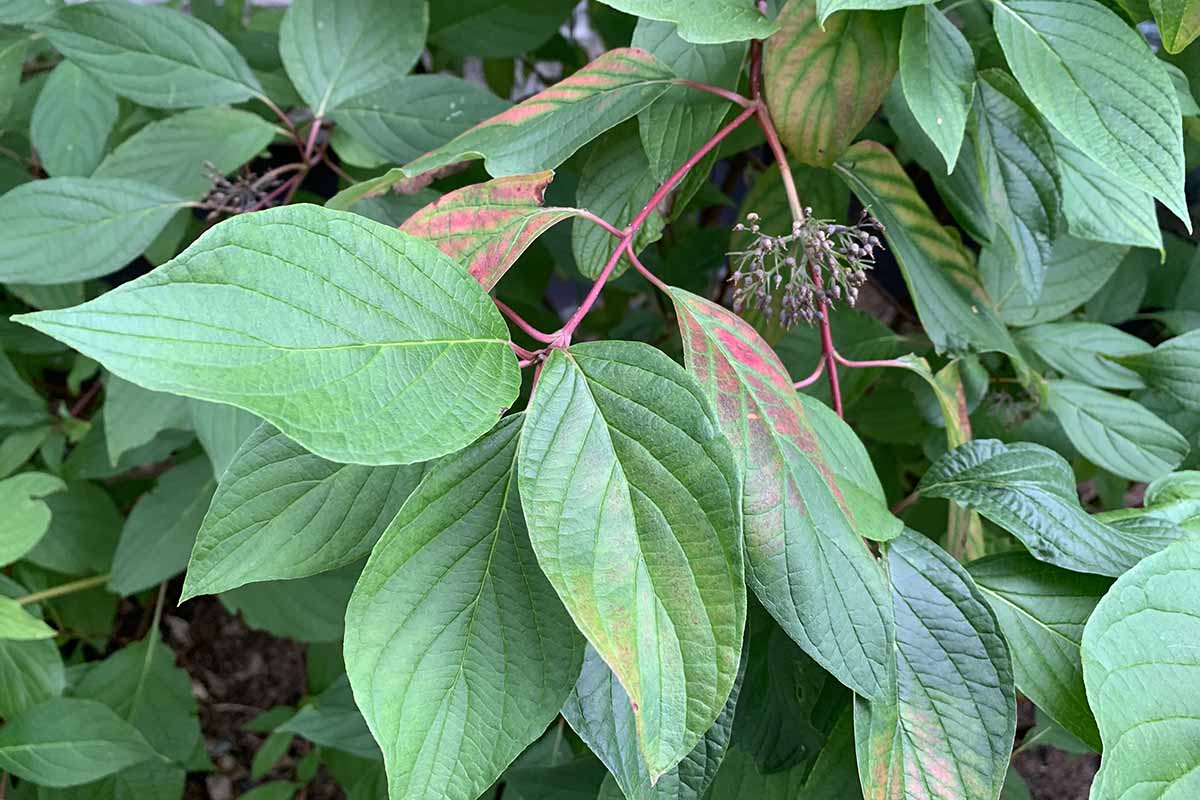

Moreover, purple twig shrubs rising within the wild have doubtless cross-pollinated with neighboring dogwoods.
Should you’re eager to gather seeds and try rising a purple twig dogwood by way of this technique, you’ll want to select the ripe berries in fall and mash them as much as extract the seed.
The seeds require cold-stratification, which may both be achieved by direct sowing contemporary seed outside in fall, or holding them within the fridge for 2 to 3 months earlier than sowing in spring.
After stratification, you’ll be able to sow the seeds in a shallow tray of potting soil or instantly within the floor in spring. Preserve even moisture within the soil.
When seedlings have reached about two inches tall, pot them up into particular person three- to six-inch containers.
As soon as seedlings have reached six to eight inches tall, they are often planted out into the backyard, ideally in spring or fall.
Be taught extra about how you can begin dogwoods from seed in our information.
From Cuttings
A extra dependable technique of propagation is to take stem cuttings.
You may take softwood cuttings in spring or summer time, or hardwood cuttings in fall, after the leaves have fallen from the plant.
Softwood
Clip four- to six-inch lengths of younger stems, defoliate the underside half, and dip the reduce finish in rooting hormone. Then stick the dipped finish right into a shallow tray of potting soil. It’s greatest to start out a lot, in case a few of them fail.
Maintain the soil constantly moist and canopy the tray with plastic that enables for some air flow, propped up so it doesn’t make contact with the cuttings. This can hold the quick air across the new vegetation moist and heat.
Place them in a sunny location, with brilliant, oblique gentle.
Once you discover new development, pot up the cuttings into particular person three- to six-inch containers. Preserve a constant stage of moisture with out drowning the roots. An excessive amount of moisture could cause rot.
As soon as the cuttings are about six to eight inches tall, you’ll be able to plant them out into the backyard, ideally in spring or fall to keep away from summer time warmth.
Hardwood
Hardwood cuttings are an much more dependable technique of propagating purple twig dogwoods. This technique is sluggish however is normally very profitable.
First, choose a wholesome trying younger shoot that’s lower than a 12 months outdated. Take away the tip, then reduce the twig into six- to nine-inch lengths. Make a clear, angled reduce above a bud on the high of every part.
On the base of every chopping make a straight reduce. That is the tip that will probably be rooted. Dip this finish in rooting hormone and tuck it right into a ready trench outside.
Your trench ought to be made in well-draining, fertile soil in a location that’s sheltered from the wind.
Stick the cuttings into the ditch in order that about one third sits above the soil, with not less than two buds uncovered. Agency the soil across the cuttings and keep constant moisture.
New aboveground development is indicative of profitable root formation, which can take a number of months, and at this level, the clones might be transplanted elsewhere if desired.
From Suckers
Many purple twig dogwoods produce suckers, and it’s attainable to divide these suckers to supply new vegetation.
Start by digging fastidiously near the world of the sucker you want to take away from the mother or father plant.
Expose the part of roots you want to divide. Reduce the part free from the mother or father plant ensuring to incorporate the stems and roots of the sucker. Fill within the gap the place you eliminated the division and agency the soil on the base of the mother or father plant.
Subsequent, take your sucker, trim the aboveground development by roughly half its unique top. This can encourage new, vigorous development after transplant.
In case your division is small, and you’re taking it within the spring, you’ll be able to foster it in a container through the summer time earlier than planting out within the fall in case you like.
As a result of these are vigorous growers, it’s positive to plant divisions instantly within the floor so long as you are likely to their wants as required.
Transplanting
The best technique to get began with a purple twig dogwood is to buy a shrub from a greenhouse or nursery and transplant it into the backyard in early spring or fall. I’ll stroll you thru the method.
First, you should definitely select an applicable planting web site. I’ll cowl every little thing your purple twig dogwood must dwell its greatest life within the subsequent part, so be at liberty to circle again right here later if it’s essential.
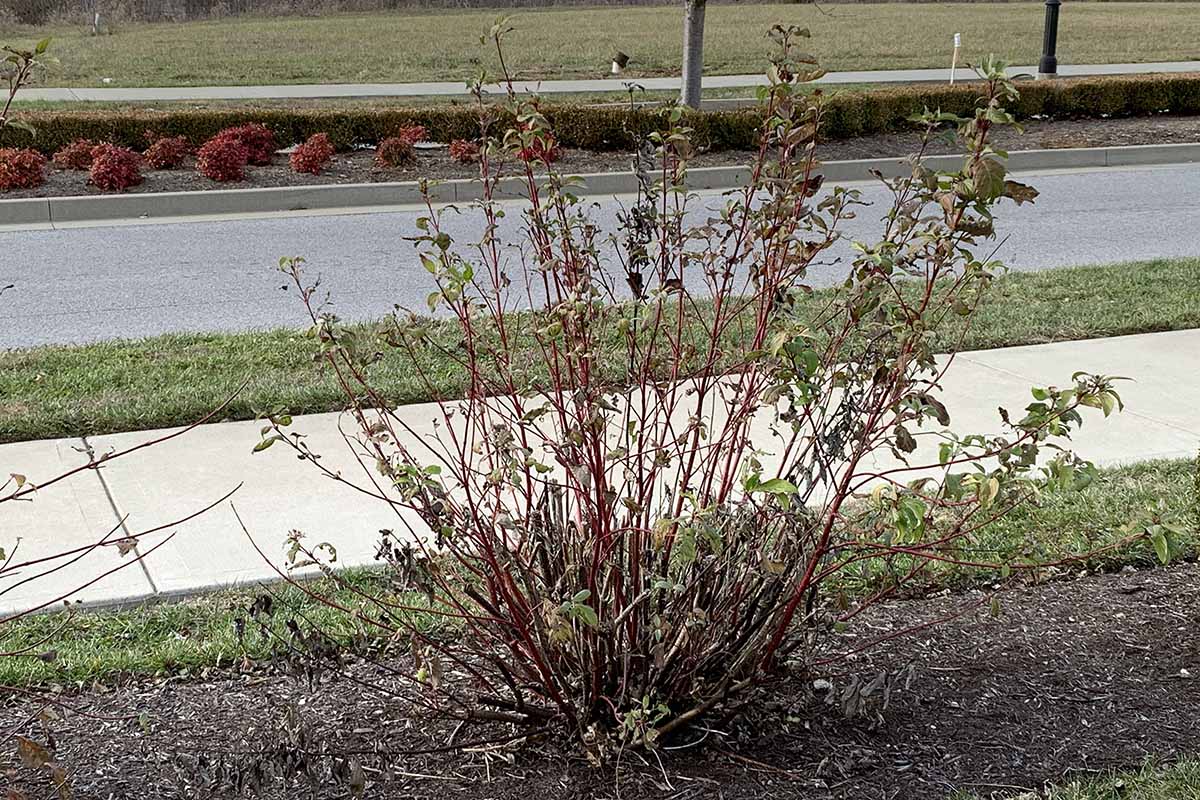

Begin by digging a gap that’s twice as huge and the identical depth as the basis ball of your shrub. Relying on the stage of development your plant is at, this could possibly be anyplace from six inches to 2 toes huge.
Subsequent, take away your plant from its container and look at the roots. Clip away any twisted or broken roots and loosen people who have grow to be potbound.
If roots are severely potbound, make a couple of cuts into the basis ball along with your hori hori or a pointy knife to create some area within the root ball.
So long as your soil is in good situation, you shouldn’t want so as to add amendments as these vegetation are fairly resilient.
Should you’re like me and also you need to give your new vegetation the most effective probability at survival, scoop in a shovelful of well-rotted compost and blend it into the soil you faraway from the planting gap.
Set the plant in place, aiming for the highest of the basis ball to be stage with the encircling floor.
Backfill with soil, gently tamping across the roots as you’re employed. Once you’re completed, give your new transplant a pleasant drink of water. This ought to be not less than two or three gallons.
If the soil settles fairly a bit whereas watering, add extra soil to the floor. Apply a two- to three-inch layer of mulch over the basis zone to help in moisture retention and to insulate the weak roots from excessive warmth or chilly.
Now that you’re aware of all of the methods to propagate purple twig dogwood shrubs, let’s take a more in-depth take a look at all the weather these vegetation have to dwell their greatest lives.
Find out how to Develop Pink Twig Dogwood
Pink twig dogwoods are appropriate for cultivation in USDA Hardiness Zones 2 to eight, relying on the kind. They develop greatest in full solar to half shade.
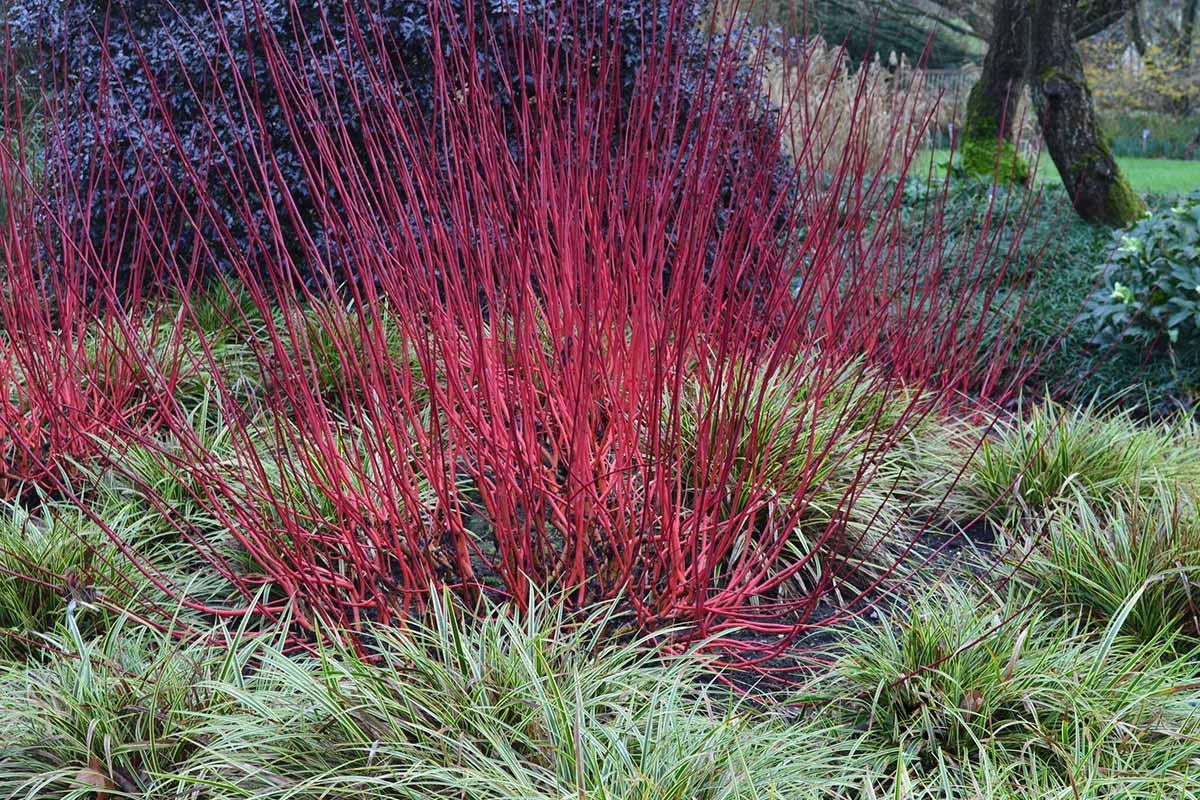

They like loamy soil with a pH of 5.5 to eight.5, however some will do positive in different soil sorts, so long as it’s moist, but well-draining. Some varieties will even tolerate moist soils, which is the rationale you’ll typically see swaths of purple twigs rising in ditches and swampy or boggy areas.
Most purple twig dogwoods are quick growers and a few sucker freely, so test the anticipated mature top and width of your plant on the tag that accompanies it so you’ll be able to plan your spacing accordingly.
These shrubs sometimes attain their most dimension someplace between 5 and 10 years outdated.
Though purple twig dogwoods may have the ability to tolerate a dry spell and bounce again after the subsequent rainfall, to maintain them as wholesome as attainable, you should definitely irrigate in occasions of drought.
These shrubs are low upkeep, save for some pruning if you wish to hold their dimension in test and encourage their vibrant purple colour. I’ll talk about pruning together with different suggestions for upkeep of those shrubs later, so hold studying!
Rising Ideas
- Select a planting web site in full solar to half shade.
- Plant in loamy soil that’s moist, but well-draining.
- Area plantings in keeping with the shrub’s dimension at maturity.
Pruning and Upkeep
There are three causes to prune purple twig dogwoods: to maintain them wholesome, to manage their form, and to encourage new development that produces the brightest purple colour.
The perfect time to prune your purple twig dogwoods is whereas the shrubs are dormant, in late winter or early spring.
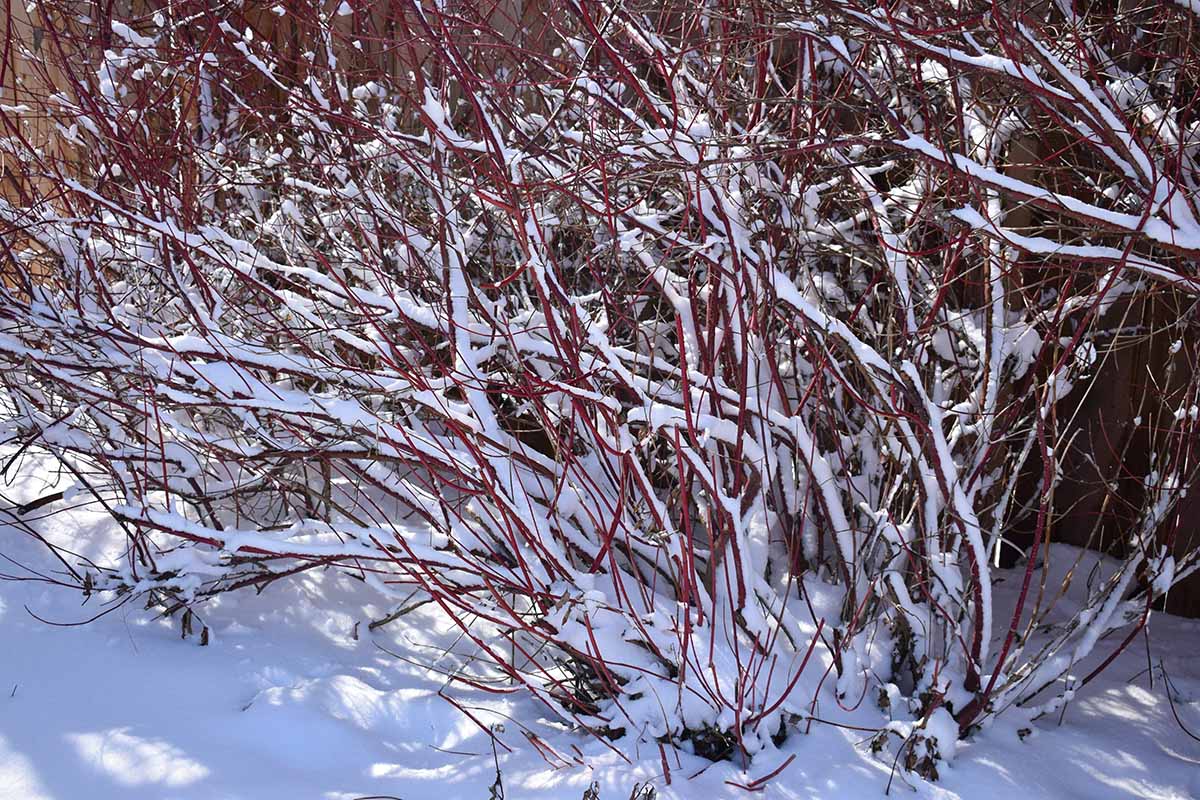

Take away any broken, damaged, crossed, or unhealthy branches by chopping them on the base of the plant, simply above the soil line.
As they’re vigorous growers, these woody shrubs can grow to be fairly massive in a short time. If you wish to include them and management their dimension, don’t be afraid of giving them a tough pruning.
In late summer time, you’ll discover that younger stems will flip purple and the colour will intensify all through the winter. As soon as the stems attain about three years outdated, they start to fade to a uninteresting inexperienced, brown, or grey colour.
Reduce these stems on the base of the plant as a part of your common pruning routine. The plant will reply by sending out contemporary, new development regularly.
These shrubs will tolerate rejuvenation pruning, which may renew an outdated, unproductive shrub. In case your purple twig dogwood has been uncared for and isn’t producing purple branches as you’d like, reduce it again to about six to eight inches from the bottom.
Though it should depart an empty area in your panorama or backyard for a season, it should rapidly fill again in with contemporary, vibrant purple development.
Observe this up with yearly pruning, eradicating about 30 p.c of the most important branches every spring. This can put your pruning schedule again on monitor.
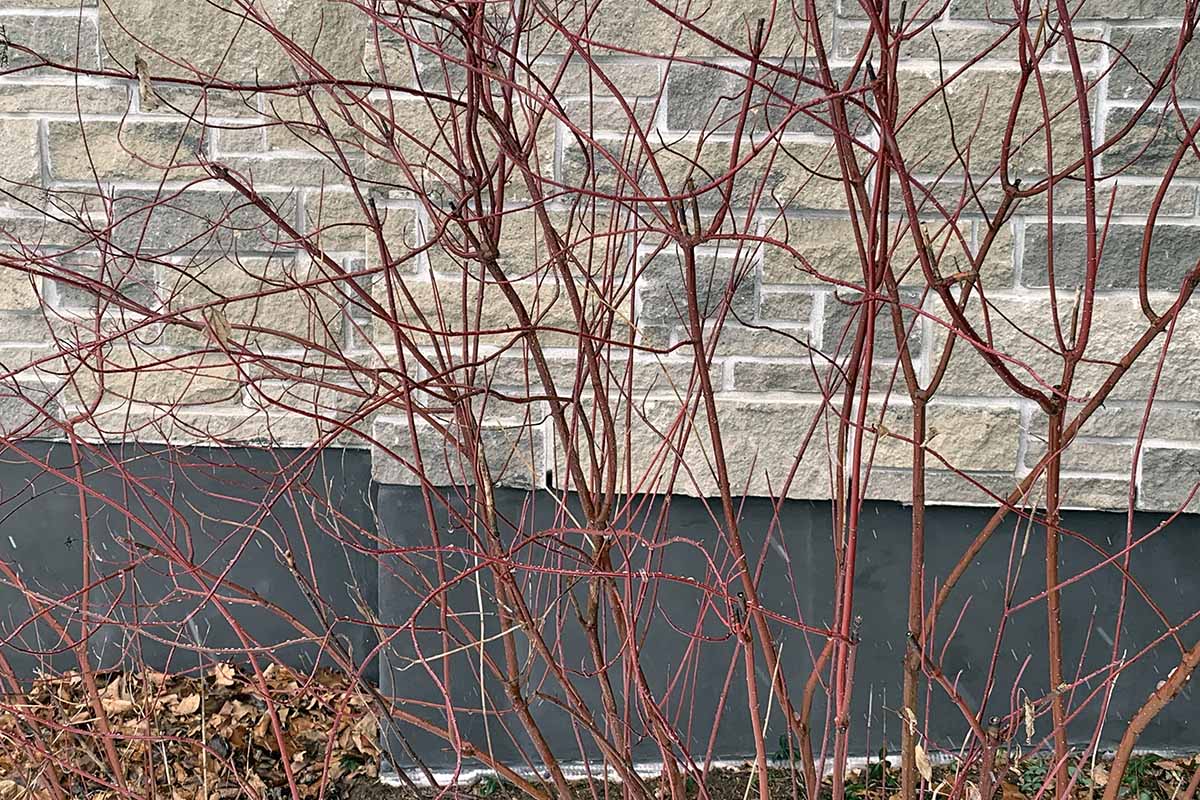

Quick-spreading suckers are very useful for controlling erosion. But when your dogwood is spreading wider than you’d like, management it by eradicating suckers.
Use a spade or sharp shovel and a few good old style brute power to stomp by way of and reduce the suckers and their roots away from the bottom of the plant.
After pruning in early spring, end your upkeep by topping up the layer of mulch to about two to 3 inches deep, from the bottom of the plant to the drip line.
This could cowl the basis zone, however not contact the stems. Maintain the mulch two inches away from the stems.
As I’ve talked about, these shrubs are very low upkeep. Guarantee they’ve constant moisture, prune to encourage new wholesome development, management suckering if desired, and mulch to retain soil moisture. Not a lot work to get that vibrant winter colour you’re on the lookout for.
Pink Twig Dogwood Species and Cultivars to Choose
With a variety of sorts and cultivars to select from throughout many of the United States and Canada, you’ll doubtless discover many fascinating purple twig dogwoods in your native area.
I’ve obtained three totally different specimens rising in my gardens right here in Zone 5b and I couldn’t be happier with them.
I’ve highlighted some widespread ones to present you an thought of the alternatives out there.
Arctic Hearth
C. sericea (syn. C. stonolifera) ‘Farrow’ aka Arctic Hearth® is a compact, dwarf purple twig dogwood shrub.
This decorative shrub grows greatest in Zones 3 to 7 and reaches a most dimension of 4 toes tall and huge.
It’s appropriate for partially shaded places and because of its small stature, is a fascinating possibility for smaller areas.
‘Farrow’ showcases fairly white flowers in spring, adopted by white berries and lovely strong, inexperienced leaves that flip purple to burgundy in autumn earlier than they fall to disclose the red-hot stems by way of winter.
Discover naked root and container-grown Arctic Hearth® dogwood out there at Nature Hills Nursery.
Arctic Solar
C. sanguinea ‘Cato’ is a purple twig dogwood cultivar additionally offered below the identify Arctic Solar®. This compact dwarf shrub grows effectively in USDA Zones 3 to 9.
‘Cato’ reaches a most top of 4 toes tall with the same unfold. Its dainty white flowers give technique to purple berries, attracting songbirds to your backyard.
The younger inexperienced leaves rapidly flip to a beautiful chartreuse, virtually neon yellow colour, then burst into shades of orange because the season adjustments to fall.
The bark of this selection glows with a singular orange and purple mixture. Some might name this a yellow twig dogwood, however the suggestions of the stems are sometimes brilliant coral purple.
You’ll doubtless discover this widespread dogwood at your native greenhouse, however in case you desire the comfort of on-line procuring it’s out there at Nature Hills Nursery.
Cardinal
C. sericea ‘Cardinal’ is a cold-hardy possibility for Zones 2 to 7. It’s a quick rising selection and reaches a mature top of as much as ten toes with the same unfold.
It produces berries in a dreamy, creamy-white colour with hints of blue.
The darkish inexperienced foliage turns a luscious shade of deep purple-red in fall and the tall stems type an excellent show of purple for winter distinction.
Discover ‘Cardinal’ out there at Nature Hills Nursery.
Ivory Halo
C. alba ‘Bailhalo,’ in any other case generally known as Ivory Halo®, grows greatest in USDA Zones 3 to 7. This can be a variegated selection, that reaches a most dimension of six toes tall and huge at maturity.
Foliage is pale inexperienced with crisp, creamy white edges. Berries are white with a cool blue undertone.
In fall, the leaves flip to a purplish-red colour, including heat to your autumn backyard show. And naturally, leaves then fall away revealing the extreme purple stems by way of winter.
Yow will discover Ivory Halo® out there at Quick Rising Timber.
Silverleaf
C. alba ‘Elegantissima,’ also referred to as silverleaf dogwood, is one other variegated purple twig dogwood that grows as much as 10 toes tall and huge.
This cultivar might be grown in USDA Zones 3 to eight.
Petite white blossoms launch a delicate perfume in spring, adopted by cute clusters of berries which can be white with a contact of blue-green.
The grey-green leaves make a really elegant presentation with their broad white or cream-colored margins.
In fall, leaves flip charming shades of peach, gold, and purple earlier than they drop to reveal the flashy purple stems for winter.
Yow will discover ‘Elegantissima’ dogwood out there at Nature Hills.
Managing Pests and Illness
Like most different dogwoods, purple twigs are resilient vegetation, however they’ll typically be affected by pest infestations and illness.
Let’s take a quick take a look at the most typical issues that you could be encounter.
Herbivores
I normally advocate defending the decrease trunks and stems of younger fruit-producing shrubs with some sort of bodily barrier.
It is because animals like rabbits and deer wish to nibble on immature development of a few of these vegetation.
With my purple twigs, nonetheless, I didn’t do that and so they had been by no means considerably bothered.
This could possibly be as a result of there have been different fascinating vegetation the herbivores had been drawn to in my gardens. However it’s a sensible thought to guard younger transplants for the primary season whereas they grow to be established.
As a result of purple twigs are multi-stemmed shrubs, trunk wraps and spirals won’t work. As a substitute, form a size of hen wire right into a cylinder across the base of your plant and safe it into the bottom with stakes.
As for birds, I’m by no means involved with defending the berries from them as a result of they aren’t a part of my eating regimen.
Actually, I take advantage of my purple twigs and different inedible shrubs to feed the birds. Birds assist management undesirable bugs and inspiring their presence in our gardens is an effective factor! So let the birds feast!
Bugs
A number of totally different sorts of bugs will feed on these shrubs, and you may examine them in our information to dogwood pests.
I’ve highlighted a couple of you must look ahead to in your purple twig dogwoods.
Dogwood Borer
Dogwood borer, Synanthedon scitula, is the larvae of a clearwing moth. The moth seems to be just like a wasp and females lay their eggs on the bark of the plant.
The larvae measures below an inch lengthy at maturity and off-white in colour with a darkish head.
Borers enter the plant by way of a gap or wound, crawl inside and feed on the cambium, inflicting the department to die.
You may discover early leaf drop or leaves turning purple sooner than traditional. You may additionally see frass, that appears like sawdust on or close to the plant.
As a result of these bugs enter by way of holes, take care to not trigger harm as you carry out upkeep reminiscent of weed whacking round your shrubs.
Should you determine these borers consuming your dogwood, prune away the affected branches.
Dogwood Membership Gall Midge
The dogwood membership gall midge, Resseliella clavula, is a tiny fly, virtually too small to see except you look intently.
It’s lower than one-eighth of an inch lengthy and it lays eggs on terminal shoots of your plant. When the eggs hatch, the larvae transfer into the close by shoot.
Because the larvae feeds, swollen galls type on the branches – they are often as much as one inch in diameter.
Within the fall, the larvae emerge from the gall and fall to the bottom beneath the place they overwinter and later rework into grownup flies to start the cycle once more.
Since infestations not often develop uncontrolled, simply prune the galls as you see them and eliminate them within the rubbish.. This destroys the larvae and ends the cycle.
Horse Chestnut Scale
Horse chestnut scale, Pulvinaria regalis, are bugs that feed by sucking sap from the host plant.
They’re small, normally about 4 to 5 millimeters in diameter, brown coloured, and spherical at maturity.
These bugs comply with a one-year generational cycle, starting in June or July when the eggs hatch. Nymphs transfer to the undersides of leaves the place they feed. Within the fall, they migrate to the bark the place they overwinter and start feeding once more in early spring.
Mature scale bugs have a protecting shell and after they lay eggs below their our bodies, these are sheltered beneath. After the eggs are laid, the grownup dies, and the eggs ultimately hatch a month or so later.
These bugs not often trigger severe harm to dogwoods. You may strive scraping eggs and adults off your vegetation or clipping away infested sections. Encourage helpful predators like ladybugs, parasitoid wasps, and birds as these devour scale as a part of their diets.
Illness
Our information to widespread dogwood ailments covers intimately the potential points it’s possible you’ll face. Right here’s a take a look at a few of the ailments that generally have an effect on purple twig dogwood vegetation.
Anthracnose
Dogwood anthracnose, aka Cornus anthracnose, is attributable to the fungus Discula destructiva. And it’s a extreme dogwood illness.
Mild brown spots, typically with darker edges, first seem on leaves and flowers. Leaves ultimately grow to be dry and the blotches improve in dimension.
From the leaves, the an infection can unfold to shoots, branches, and stems the place it causes cankers to type, which may girdle the department and kill it.
Trim away all affected elements of the plant, and eliminate them. Rake up and clear away fallen leaves from the world and destroy or put them within the trash.
If you’re battling an an infection of dogwood anthracnose, and also you’ve pruned and cleaned up the world however you continue to discover indicators of an infection, take into account treating with a copper fungicide.
Bonide Liquid Copper Fungicide
Search for a product like Bonide Liquid Copper Fungicide spray, out there at Arbico Organics.
Observe directions on the label fastidiously.
Powdery Mildew
Powdery mildew is a illness attributable to the fungus Erysiphe pulchra, previously generally known as Microsphaera pulchra.
Frequent in dense, shady areas, this fungus can develop uncontrolled on account of poor air circulation and damp situations.
It causes leaves to look as if they’re coated in a positive, white mud and infrequently look scorched, dry, and discolored. Defoliation might happen in extreme instances.
Most instances of powdery mildew seem in late summer time, towards the tip of the rising season. Because of this, many gardeners select to not deal with it because the leaves will start to fall quickly anyway.
Clear up and destroy affected fallen leaves and prune out useless or severely affected branches. Common annual pruning encourages higher air circulation between the branches.
If powdery mildew begins early within the season, you may think about using a fungicide, however to be efficient, it’s essential apply it instantly if you first discover signs.
You may be taught extra about how you can handle powdery mildew in our information.
Spot Anthracnose
Spot anthracnose is a fungal illness attributable to Elsinoe corni. It normally seems after intervals of excessive humidity or prolonged, frequent rainfall.
Because the climate clears up, and issues start to dry out you’ll discover apparent indicators.
Tiny brown to purplish spots seem on the flowers and the petals may start to wrinkle and grow to be distorted. The illness can then transfer to the leaves, the younger shoots, and the fruits.
Critical an infection not often happens, but when it does grow to be extreme or repeat the subsequent 12 months, it could actually stress the plant and weaken it.
As a result of the fungus can survive winters on plant materials, trim away any affected areas and eliminate it within the trash. Contemplate treating with a fungicide if it turns into difficult to manage over a couple of season.
Finest Makes use of for Pink Twig Dogwoods
Pink twig dogwoods are primarily valued for his or her distinctive decorative options, providing colourful year-round visible curiosity in landscapes and gardens.
Smaller specimens might be planted in borders and all sizes can be utilized as focal factors and accents.
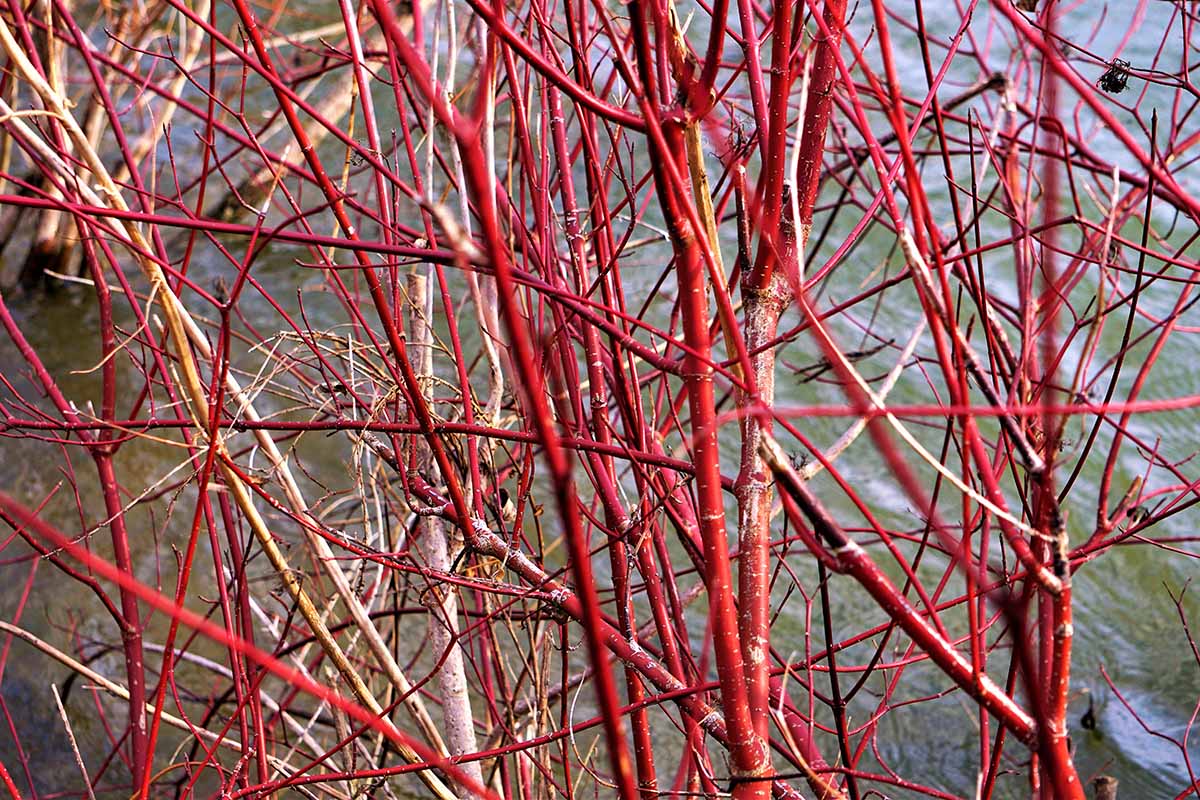

They’re a supply of meals for pollinators, birds, and different small mammals which makes them an excellent selection for land restoration initiatives and ecological refuge websites.
These shrubs are additionally useful within the utility of abrasion management because of their fast-growing and suckering habits. This additionally makes them a favourite for hedging and mass plantings.
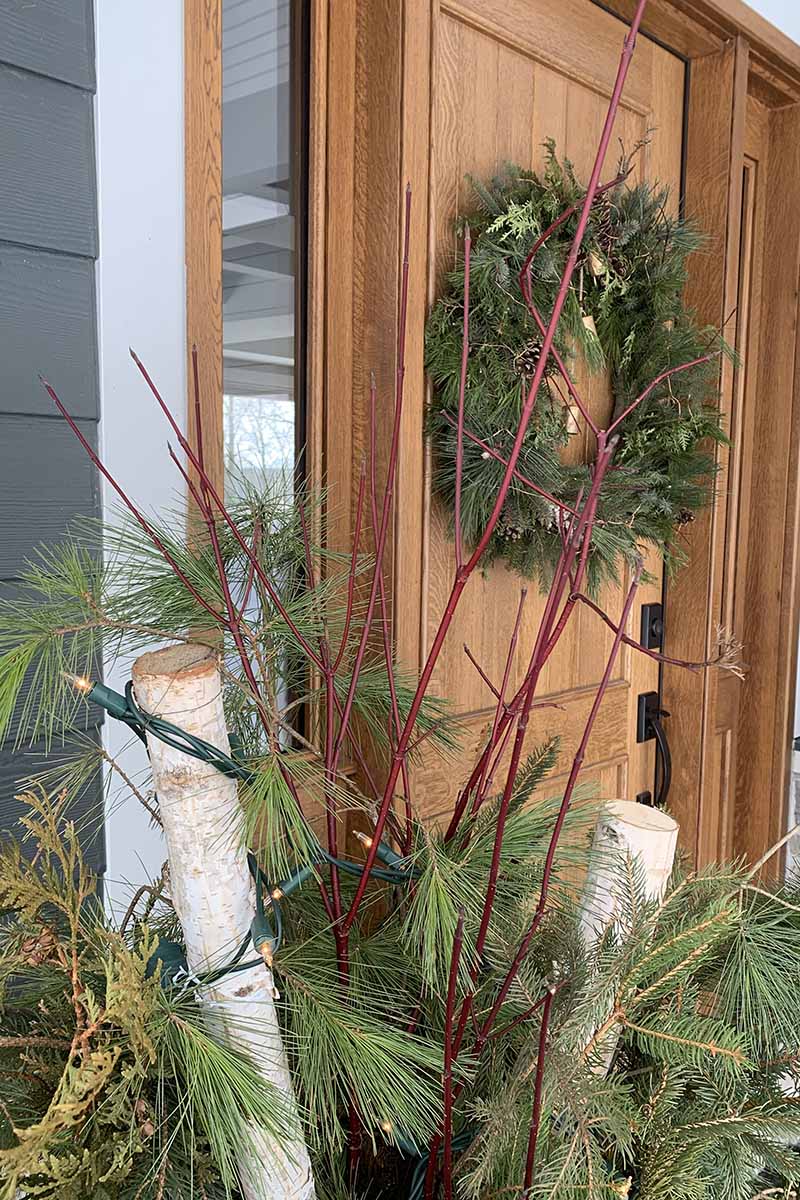

My absolute favourite cause for rising these vegetation is for his or her winter curiosity. I am keen on how the purple stems stand out in opposition to snow and the distinction they provide to greenery preparations.
Fast Reference Rising Information
| Plant Sort: | Deciduous woody shrub | Flower/Foliage Shade: | Yellow, white / inexperienced, variegated |
| Native to: | Asia, Europe, North America | Upkeep: | Average |
| Hardiness (USDA Zone): | 2-8 | Tolerance: | Deer, rabbits, moist soil |
| Bloom Time/Season: | Spring, winter curiosity | Soil Sort: | Clay, loamy, sandy |
| Publicity: | Full solar to half shade | Soil pH: | 5.5-8.0 |
| Time to Maturity: | 5-10 years | Soil Drainage: | Effectively-draining |
| Spacing: | Width of mature unfold | Attracts: | Bees, birds, butterflies |
| Planting Depth: | 1/2 inch (seed), depth of root system (transplants) | Makes use of: | Borders, focal factors, hedging, mass plantings, naturalizing, decorative accents, screening, seasonal curiosity, specimens, winter preparations |
| Top: | 4-15 toes | Order: | Cornales |
| Unfold: | 3-15 toes | Household: | Cornaceae |
| Water Wants: | Average | Genus: | Cornus |
| Frequent Pests and Illnesses: | Bagworms, dogwood borer, dogwood club-gall midge, horse chestnut scale, leaf miners, scale; Cornus anthracnose/dogwood anthracnose, grey mould, honey fungus, leaf spot, leaf blight, powdery mildew, root rot, spot anthracnose, twig blight | Species: | Alba, sanguinea, sericea |
Set the Snow on Hearth!
As winter’s chill takes maintain, let the fiery stems of purple twig dogwood heat you up because it units the snowy panorama ablaze with colour.
These vibrant sentinels stand guard over the slumbering earth, promising the return of spring’s sunshine and a brand new rising season.


From the historical past of those beautiful shrubs to their care and upkeep wants, we’ve coated every little thing it’s essential know in regards to the purple twig dogwood.
What do you will have rising in your winter backyard? Tell us within the feedback part beneath.
And for extra details about various kinds of dogwoods and how you can develop them, try these guides subsequent:
